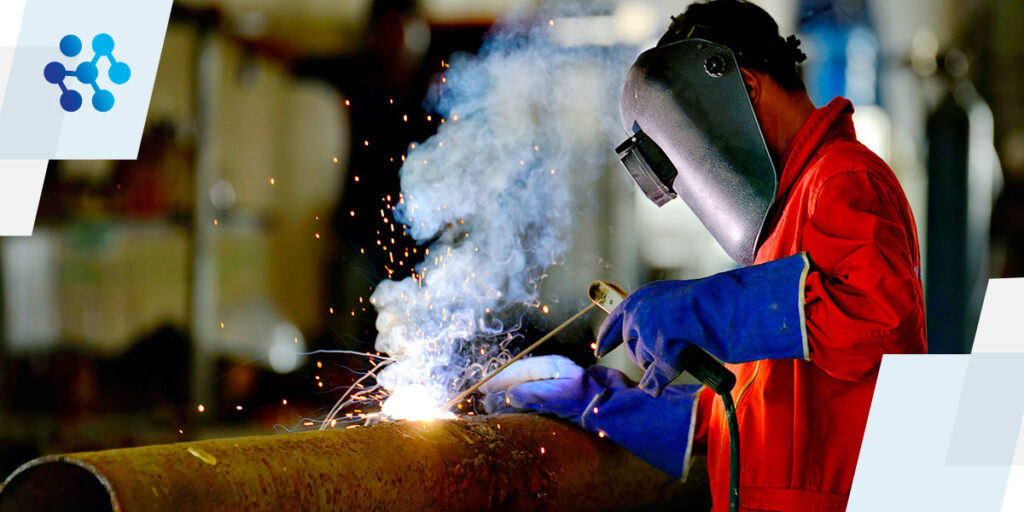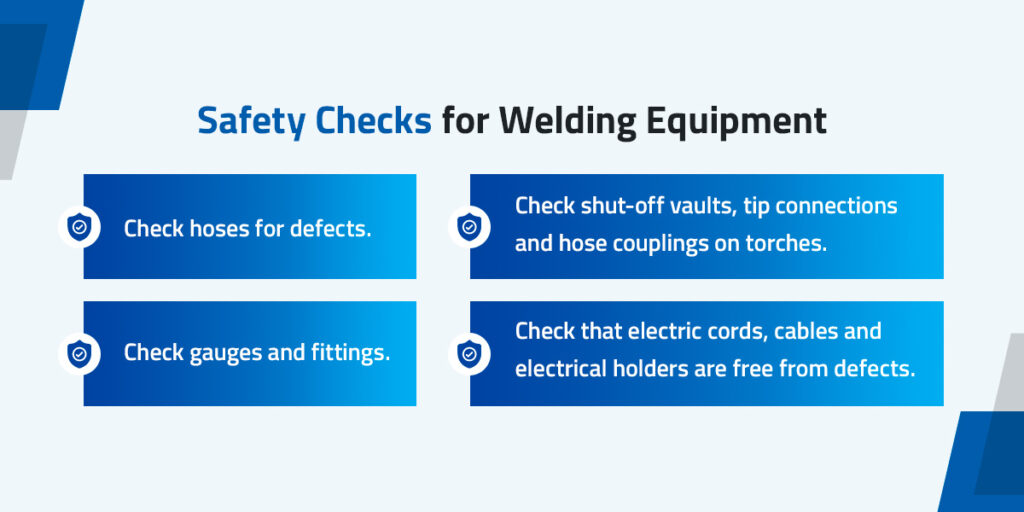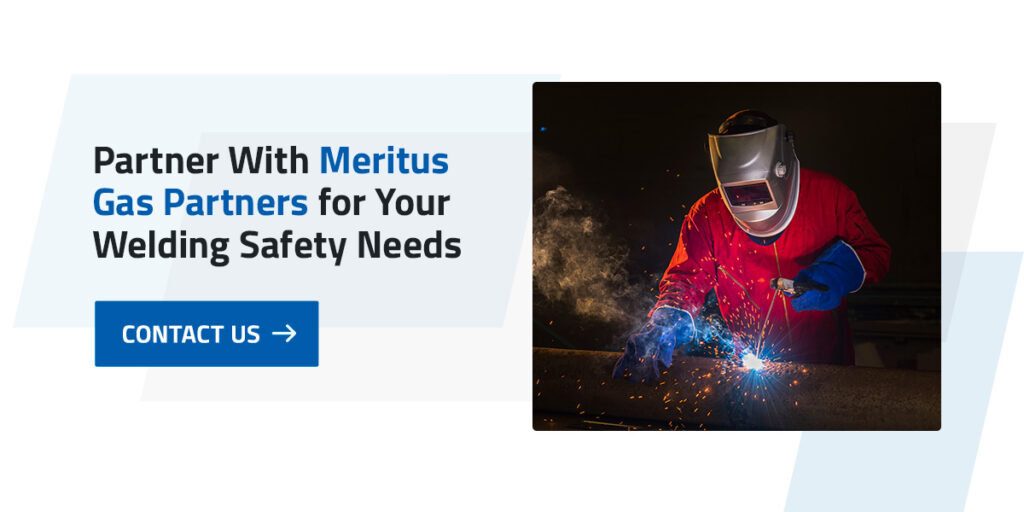

Professional welders make the job look easy, but the reality is that welding is a dangerous occupation that comes with health and safety risks. Welders work with compressed gases, electric currents, flammable materials and specialized equipment to complete a job, all of which can pose various hazards, from the possibilities of electric shock, fire and explosions to toxic fume exposure.
Welders can protect themselves and others on a job site by always following safety measures. This ultimate welding safety guide explores safety standards and regulations in welding so that you can maintain a workspace that is as safe as possible.
Welding safety is paramount to prevent accidents, injury and compromised health. A safe welding area also helps welders work efficiently and deliver quality projects.
To mitigate the risks associated with a welding workplace, follow these guidelines:
Training all staff who would need to enter weld areas is an excellent way to uphold safety standards and regulations in welding. Through continued education programs, workers stay up to date on rules and policies to create a safe welding environment.
Understanding OSHA guidelines ensures a safer facility. OSHA has welding safety requirements in place that help protect workers and property and help facilities stay compliant. OSHA’s regulations and requirements cover all aspects of welding and include standards for training, techniques, PPE, fume and gas management and more.
The most effective way to navigate OSHA’s requirements is to educate facility managers on OSHA standards and conduct regular internal checks.
Risk management assessments provide an excellent foundation for ensuring an overall safer workspace. Without proper risk assessments, facility owners or managers could face liability costs or property loss and welders and staff can face unnecessary risks regarding their health and safety.
A proper assessment helps identify risk management opportunities in welding. Risk assessments should address the following:
Working through a risk assessment that covers these points can help you find ways to prevent welding-related accidents.
Proper welding techniques are vital for preventing accidents, injuries and exposure to toxic fumes.
Various welding techniques use electricity to produce arcs and fuse metals, so understanding arc welding techniques for safety is a top priority. Working with high-voltage equipment leaves the risk of electric shock, which is potentially fatal. Through proper checks and techniques, welders can reduce the risk of electric shock and ensure increased safety during arc welding:
OSHA’s safety requirements outline guidelines for proper ventilation and control of hazardous fumes and gas. Adequate ventilation is key in any form of welding — whether using electric arcs or gas welding to bond metals, the process produces smoke that contains toxic fumes and gas byproducts.
Breathing welding fumes can lead to various health complications, including the risk of lung-related diseases, an increased risk of cancer, stomach ulcers, kidney damage, damage to the nervous system and asphyxiation.
All weld areas must have adequate ventilation systems, and workplaces should ensure welds only take place in confined spaces with proper ventilation. Workers or anyone in the weld area should wear respiratory protection where required.
Welds produce incredible heat to bond metals and require the use of flammable materials. Always follow these fire prevention measures in the workspace:

Safety during welding often starts with using well-maintained equipment. Working with faulty equipment can easily lead to preventable accidents and injuries.
Follow these checks for arc and gas welding equipment:
One of the most effective ways welders can prevent injury is by wearing the correct personal protective equipment. Through the proper use of PPE, welders can protect themselves from exposure to toxic fumes, burns from UV radiation and hot metals, cuts, shocks, eye injuries and even broken bones from heavy objects accidentally falling.
Essential protection equipment for welders includes:
Be sure to follow these extra tips to ensure proper PPE use:

At Meritus Gas Partners, we work with reputable distributors in the industry that prioritize safety by offering premium equipment and services that streamline your operations. Our partner businesses provide quality solutions, including welding equipment repair services.
You can rely on professional, efficient and helpful services from a partner near you for all your gas welding supplies. Feel free to visit any of our branches or contact us today to discuss solutions to suit your needs.